|
Reply |
Message 1 of 42 on the subject |
|
Iglesia de Santa María Magdalena (Jerusalén)
De Wikipedia, la enciclopedia libre
La iglesia de Santa María Magdalena (en ruso: Храм Марии Магдалины, Khram Marii Magdaline) es un templo de la iglesia ortodoxa rusa situado en el Monte de los Olivos, cerca del Jardín de Getsemaní, en Jerusalén.[1] Está dedicada a María Magdalena y en sus instalaciones se enuentran las reliquias de dos santos mártires ortodoxos.
Está dedicada a María Magdalena (María de Magdala) una seguidora de Jesús. De acuerdo con el versículo XVI del evangelio de Marcos, María Magdalena fue la primera en ver a Cristo después de su resurrección.[2] Es considerada una de las discípulas importantes y cruciales de Jesús, y al parecer la mujer más allegada, junto con María de Betania, la algunos creen que se trata de la misma mujer.[3] La iglesia fue construida en 1886 por el zar Alejandro III de Rusia, en honor a su madre, la emperatriz María Alexandrovna de Rusia. Fue construida por David Grimm con el tradicional techo estilo tienda de campaña, popular en los siglos XVI y XVII en Rusia, e incluye siete distintivas cúpulas doradas tipo «cebolla».[1] El convento está situado directamente enfrente del Monte del Templo cruzando el valle de Cedrón.
En la iglesia están enterrados los restos de dos santos mártires ortodoxos, la Gran Duquesa Isabel Fiódorovna Románova de Rusia y su compañera la monja Varvara Yakovleva. También está enterrada allí la princesa Alicia de Grecia —sobrina de la Gran Duquesa y suegra de la reina Isabel II del Reino Unido—, que prestó ayuda a miembros de la comunidad judía, durante la ocupación nazi de Grecia.[1]
[editar] Referencias
[editar] Enlaces externos
http://es.wikipedia.org/wiki/Iglesia_de_Santa_Mar%C3%ADa_Magdalena_(Jerusal%C3%A9n) |
|
|
|
Reply |
Message 13 of 42 on the subject |
|
Abbe Boudet talks about the Druids and the symbolism of the circle  A small circle surrounded by a larger circle the smaller circle relates to the created world the larger circle is the perfection of God the creator of Life 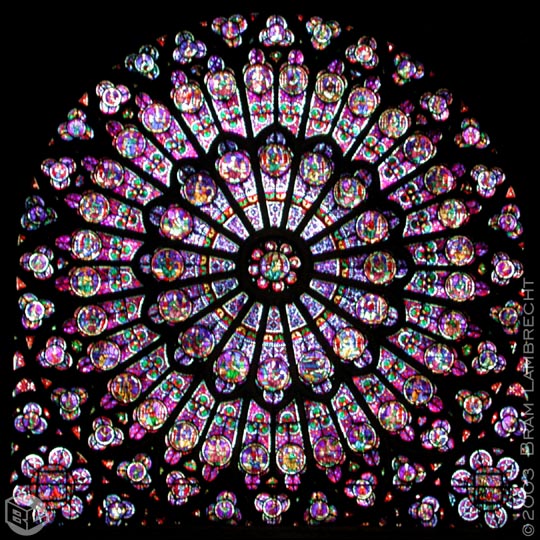 A rose window reflects this 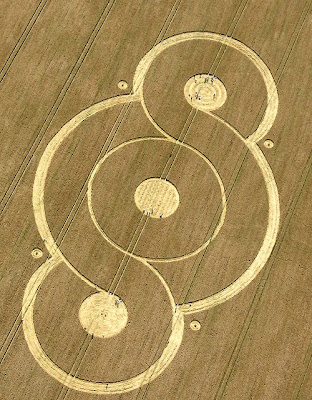 Crop Circle Formation At West Overton, near Lockeridge, Wiltshire. Reported on the 9th of August 2009 this pattern is seen at the Sistine chapel and at Church of the Holy Sepulchre
|
|
|
|
Reply |
Message 14 of 42 on the subject |
|
COMPARE LA FLOR DE LIS CON EL AGUILA CON DOS CABEZAS
On the floor, in front of the Holy Sepulchre, is a mosaic figure of a double headed eagle - symbol of the Byzantine empire and the Greek Orthodox church.
Abbe Boudet talks about the Druids and the symbolism of the circle  A small circle surrounded by a larger circle the smaller circle relates to the created world the larger circle is the perfection of God the creator of Life  A rose window reflects this  Crop Circle Formation At West Overton, near Lockeridge, Wiltshire. Reported on the 9th of August 2009 this pattern is seen at the Sistine chapel and at Church of the Holy Sepulchre |
|
|
|
Reply |
Message 15 of 42 on the subject |
|
Can ask Crow are they part of the police force of France or the EU? Are they reporting to Interpol? and what is the criticism? it is interesting their coming to Bugarach for the 2012 What are they afraid of? The order of the Solar Temple finale? The Solar Temple was a secret society based upon the modern myth of the continuing existence of the Knights Templar (see Origins of the Solar Temple below). OTS was started by Joseph Di Mambro and Luc Jouret in 1984 in Geneva as l'Ordre International Chevaleresque de Tradition Solaire (OICTS) and renamed Ordre du Temple Solaire. 
_________________
Everything is Connected and there are no
coincidences
|
|
|
|
Reply |
Message 16 of 42 on the subject |
|
La Madeleine, Paris
From Wikipedia, the free encyclopedia
L'église de la Madeleine (French pronunciation: [leɡliːz də la madəlɛn], Madeleine Church; more formally, L'église Sainte-Marie-Madeleine; less formally, just La Madeleine) is a Roman Catholic church occupying a commanding position in the 8th arrondissement of Paris.
The Madeleine Church was designed in its present form as a temple to the glory of Napoleon's army. To its south lies the Place de la Concorde, to the east is the Place Vendôme, and to the west L'église Saint-Augustin.
[edit] History
The site of this edifice, centred at the end of rue Royale, a line-of-sight between Gabriel's twin hôtels in the Place de la Concorde, required a suitably monumental end from the time the square was established in 1755, as Place Louis XV. The settlement round the site was called Ville l'Évêque, for it had belonged to the bishop of Paris since the time of Philip II of France, when Bishop Maurice de Sully seized the synagogue that stood on the site from the Jews of Paris in 1182, and consecrated it a church dedicated to Mary Magdalene. The site in the suburban faubourg had been annexed to the city of Paris since 1722.
Two false starts were made on building a church on this site. The reconstruction of the older church consecrated to Mary Magdalene was considered. The first design, commissioned in 1757, with construction begun with the King's ceremonial placing of the cornerstone, April 3, 1763, was halted in 1764; that first design, by Pierre Contant d'Ivry, was based on Jules Hardouin Mansart Late Baroque church of Les Invalides, with a dome surmounting a Latin cross. In 1777, Contant d'Ivry died and was replaced by his pupil Guillaume-Martin Couture, who decided to start anew, razing the incomplete construction, shortening the nave and basing his new, more centralized design on the Roman Pantheon. At the start of the Revolution of 1789, however, only the foundations and the grand portico had been finished; the choir of the former church was demolished in 1797, but work was discontinued while debate simmered as to what purpose the eventual building might serve in Revolutionary France: a library, a public ballroom, and a marketplace were all suggested. In the meantime, the National Assembly was housed in the Palais Bourbon behind a pedimented colonnaded front that was inspired by the completed portico at the far end of the former rue Royale.
After the execution of Louis XVI his body was immediately transported to the old Church of the Madeleine (demolished in 1799), since the legislation in force forbade burial of his remains beside those of his father, the Dauphin Louis de France, at Sens. Two curates who had sworn fealty to the Revolution held a short memorial service at the church. One of them, Damoureau, stated in evidence:
| “ |
Arriving at the cemetery, I called for silence. A detachment of Gendarmes showed us the body. It was clothed in a white vest and grey silk breeches with matching stockings. We chanted Vespers and the service for the dead. In pursuance of an executive order, the body lying in its open coffin was thrown on to a bed of quicklime at the bottom of the pit and covered by one of earth, the whole being firmly and thoroughly tamped down. Louis XVI's head was placed at his feet. |
” |
On 21 January 1815 Louis XVI and his wife's remains were re-buried in the Basilica of Saint-Denis where in 1816 his brother, King Louis XVIII, had a funerary monument erected by Edme Gaulle.
In 1806 Napoleon made his decision to erect a memorial, a Temple de la Gloire de la Grande Armée ("Temple to the Glory of the Great Army"); following an elaborate competition with numerous entries and a jury that decided on a design by the architect Claude Étienne de Beaumont (1757–1811), the Emperor trumped all, instead commissioning Pierre-Alexandre Vignon (1763–1828) to build his design on an antique temple (Compare the Maison Carrée, in Nîmes) The then-existing foundations were razed, preserving the standing columns, and work begun anew. With completion of the Arc de Triomphe du Carrousel in 1808, the original commemorative role for the temple was blunted.
After the fall of Napoleon, with the Catholic reaction during the Restoration, King Louis XVIII determined that the structure would be used as a church, dedicated to Mary Magdalene. Vignon died in 1828 before completing the project and was replaced by Jacques-Marie Huvé. A new competition was set up in 1828-29, to determine the design for sculptures for the pediment, a Last Judgment, in which Mary Magdalene knelt to intercede for the Damned; the winner was Philippe Joseph Henri Lemaire. The July Monarchy rededicated the monument of repentance for Revolution as a monument of national reconciliation, and the nave was vaulted in 1831. In 1837 it was briefly suggested that the building might best be utilized as a train station, but the building was finally consecrated as a church in 1842.
The funeral of Chopin at the Church of the Madeleine in Paris was delayed almost two weeks, until October 30, 1849. Chopin had requested that Mozart's Requiem be sung. The Requiem had major parts for female voices, but the Church of the Madeleine had never permitted female singers in its choir. The Church finally relented, on condition that the female singers remain behind a black velvet curtain.
[edit] Architecture

Interior of the Église de la Madeleine, Paris
The Madeleine is built in the Neo-Classical style and was inspired by the Maison Carrée at Nîmes, one of the best-preserved of all Roman temples. Its fifty-two Corinthian columns, each 20 metres high, are carried around the entire building. The pediment sculpture of the Last Judgement is by Lemaire, and the church's bronze doors bear reliefs representing the Ten Commandments. Its size is 354 feet (108 meters) long and 141 feet (43 meters) wide.
Inside, the church has a single nave with three domes over wide arched bays, lavishly gilded in a decor inspired as much by Roman baths as by Renaissance artists. At the rear of the church, above the high altar, stands a statue by Charles Marochetti depicting St Mary Magdalene being lifted up by angels which evokes the tradition concerning ectasy which she entered in her daily prayer while in seclusion. The half-dome above the altar is frescoed by Jules-Claude Ziegler, entitled The History of Christianity, showing the key figures in the Christian religion with — a sign of its Second Empire date — Napoleon occupying centre stage.
The Madeleine is a parish of the Archdiocese of Paris. Masses and other religious services are celebrated daily. Funerals and the most fashionable weddings in Paris are still celebrated here. In the basement of the Church (entrance on the Flower Market side) is The Foyer de la Madeleine. Typical of various foyers run by religious and civic groups throughout France the Madeleine is the home of a restaurant open from Monday to Friday 11:30 am to 2:00 pm except holidays, school vacations and the month of August. For a yearly subscription fee of 3 Euros one can dine under the vaulted ceilings on a three course French meal served by volunteers for the price of 7.50 Euros. After dining one can take coffee in a lounge at the far end of the foyer for one of the cheapest espressos in Paris, 70 centimes. The walls of the Foyer are often decorated by local artists.
[edit] Organ and organists
The church has a celebrated pipe organ, built by Aristide Cavaillé-Coll in 1845. It was restored by Cavaille-Coll's successor Charles Mutin in 1927, who also extended the manuals to 56 notes. Tonal modifications were carried out by Roethinger, Danion-Gonzalez, and Dargassies in 1957, 1971 and 1988 respectively. The position of titular organist has been held by many major organists and composers over the years:
|
|
|
|
Reply |
Message 17 of 42 on the subject |
|
The Church of Mary Magdalene is a Russian Orthodox church located on the Mount of Olives, near the Garden of Gethsemane in Jerusalem, Israel. The church is dedicated to Mary Magdalene (Miryam of Migdal), a follower of Jesus. According to the sixteenth chapter of the gospel of Mark, Mary Magdalene was the first to see Christ after his resurrection. (Mark 16:9) She is considered a crucial and important disciple of Jesus, and seemingly his primary female associate, along with Mary of Bethany, whom some believe to have been the same woman.[1] The church was built in 1886 by Tsar Alexander III to honor his mother, Empress Maria Alexandrovna of Russia. It was constructed to David Grimm's design in the traditional tented roof style popular in 16th and 17th century Russia, and includes seven distinctive, gilded onion domes. The convent is located directly across the Kidron Valley from the Temple Mount. Two martyred saints, who are the Grand Duchess Elizabeth Feodorovna of Russia and her fellow nun Varvara Yakovleva are buried in the church.[2] In the 1930s, Princess Alice of Battenberg, mother of the Duke of Edinburgh, visited the church and asked to be buried near the Grand-Duchess Elizabeth. In 1969, she died at Buckingham Palace. In 1988, her remains were transferred to a crypt below the church.[3] http://en.wikipedia.org/wiki/Church_of_Maria_Magdalenethe pentacles are seen in the mosaic floor One large white one and a tilted red one surrounded by a circle is seen in a chapel  to the far right there is four cube like tiles on the floor behind the candles The painting is of Tiberius being taught a lesson by Mary Magdalene In her hand she holds a red egg which she presents to the Emperor, symbolizing the resurrection and eternal life. She tells Tiberius about the unjust judgment and death on the cross of Jesus Christ. It is known that after re-examining this unlawful trial Pilate, at that time governor of Jerusalem, was deposed and sent into exile. Mount Olives and Gethesamene Tomb of the Prophets: Beginning at the top of the Mount of Olives is the Tomb of the prophets. According to Jewish tradition this is the location of where the prophets Haggai, Zechariah, and Malachi are buried. However, the tombs are actually catacombs which came into use around 1st century B.C. what is interesting is the Dome of the Rocks has a gold roof and so does Mary Magdalene Church In the chapel of Mary Magdalene at the Church of the Holy Sepulcre http://www.biblewalks.com/Photos9/Spulcher12.JPGthe floor patten is interesting especially the star like circle with a green circle in the middle the floor pattern dates back to 1100 AD he Russian abbot Daniel visited Jerusalem in 1106-1107 and left this description: "The Church of the Resurrection is of a circular form having twelve monolithic columns and six pillars. Its floor is made of beautiful marble slabs. url]http://www.christusrex.org/www1/jhs/TSspdest.html[/url]
|
|
|
|
Reply |
Message 18 of 42 on the subject |
|
"Undertake this journey for the remission of your sins,
with the assurance of the imperishable glory of the Kingdom of Heaven!"Pope Urban II and the crowd shouts "Deus le volt! - wear an emblem in the shape of a red cross on their body. And so derived the word "Crusader," from the Latin word cruciare - to mark with a crossThe language of Rome was Latin, but that of Constantinople Greek. Schism of 1054 Where Rome excommunicated the Greek patriarch All of the early Christian Churches were followers of Jesus Christ from the time of the Apostles, and considered themselves one holy, catholic and apostolic Church. Each developed and retained their ancient and distinctive liturgies, rites, and customs. However, Latin Rome asserted the Pontiff, as the representative of Peter, had supreme authority over all of Christianity, whereas the Greek East considered the Pope, the Bishop of Rome and the representative of Peter, as presiding "with love, as a first among equals." Decisions made in the first seven ecumenical Councils of the Church were universally recognized by East and West. The difference in perception of Church authority produced the conflict over the addition of the word filioque ("and the Son") to the Nicene Creed by the Roman Catholic Church. The Nicene Creed originated at the Council of Nicaea in 325, and was expanded to quote John 15:26, "the Holy Spirit proceeding from the Father" at the Council of Constantinople in 381, to form the Nicene-Constantinopolitan Creed Theological thought on the Trinity progressed with time, particularly with St. Augustine, who saw the Holy Spirit as an expression of love between the Father and the Son. Charlemagne had the word filioque added to the Nicene-Constantinopolitan Creed, so the phrase read "the Holy Spirit who proceeds from the Father and the Son" (as Roman Catholics say today). The Eastern Orthodox Churches claim that the Nicene-Constantinopolitan Creed "is the common possession of the whole church and that any change must be done by an ecumenical Council." http://jesuschristsavior.net/Crusades.htmlThe naming of Charlemagne as the Holy Roman Emperor by Pope Leo III on Christmas Day 800 only deepened the rift between East and West, as this had been the title of the Byzantine Emperor in Constantinople since the days of Constantine! Pope Gregory VII (1073-1085), following St. Augustine, developed the concept of "penitential warfare," whereby warfare was justified when performed in the service and defense of the Church and the faith. He offered absolution to those who died fighting for the Cross in the reconquest (reconquista) of Spain.7 But it was Pope Urban II who formally invoked penitential warfare - warfare in the service and defense of the Church for the remission of sins, when he called for the First Crusade on November 27, 1095. Penitence Penitence Penitencethe restoration of the Church of the Holy Sepulchre. Fifty years after the capture of Jerusalem, the Crusaders completed and dedicated the church in Romanesque architecture on 15 July 1149. The Church one visits today is the one built by the Crusaders The chapel of Mary Magdalene is there and reflects the importance the Crusaders felt for Magdalene
|
|
|
|
Reply |
Message 19 of 42 on the subject |
|
The Franciscan church is attached to the Church of the Holy Sepulchre by the Magdalene chapelOne of the most holiest churches, located in Jerusalem at the traditional site of Golgotha - the place of Jesus Crucifixion and burial.Matthew 27: 33, 60: "And when they were come unto a place called Golgotha....And laid it in his own new tomb, which he had hewn out in the rock: and he rolled a great stone to the door of the sepulchre, and departed"http://www.biblewalks.com/Sites/Sepulcher.html#MagdaleneOn the floor, in front of the Holy Sepulchre, is a mosaic figure of a double headed eagle - symbol of the Byzantine empire and the Greek Orthodox church.that is also the symbol used by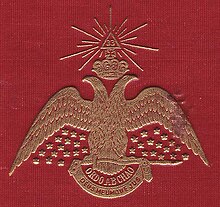 Morals and Dogma by Pike and the Scottish RitesThe first mention of a double-headed eagle in the West dates from 1250, in a roll of arms of Matthew of Paris for Emperor Frederick II of the Holy Roman Empire. Usually depicted black on a gold background, it replaced the earlier single-headed eagle, and was subsequently adopted in the coats of arms of many German cities and aristocratic families. After the dissolution of the Holy Roman Empire in 1806, the double-headed eagle was retained by the Austrian Empire, and served also as the coat of arms of the German Confederation.The double-headed eagle was part of the emblem of the Order of the Solar Temple. This cult was started by Joseph Di Mambro and Luc Jouret in 1984 in Geneva. It gained notoriety in 1994 when members of the cult committed mass suicide and murders in two villages in Switzerland, followed in 1997 by suicide/murders in Canada.http://en.wikipedia.org/wiki/Double-headed_eagleThe Greek Orthodox chapel has a circle floor with a sun and wavy rays coming from itthere is a rock there which the crack goes down to the chapel of Adam belowit is said that Jesus blood dripped down to reach the skull of AdamMagdalen's star has points and a green stone centerhttp://www.sacred-destinations.com/israel/jerusalem-holy-sepulchre-photos/slides/franciscan-mass-cc-irithThe Franciscanshe impact of the Franciscan Third Order Secular upon the feudal society of medieval Europe has been held to be considerable. Among its ways of impacting that era was the prohibition on the brothers of the Order from bearing arms. This stance of pacifism in a society with frequent feuds and wars was upheld by the authority of the Church, and limited the ability of the nobility and towns to demand that all men be subject to serving in battle.Also, the admission to the Order of members from all stations in life on an equal basis was a mechanism for promoting social change in a period of rigid social stratification.The Third Order has known many notables among its members. Outstanding among them is Saint Elisabeth of Hungary, though it is not established to all that she ever formally joined;[3] she is, however, Patroness of the Order. Additionally, she is traditionally paired with St. Louis, King of France, declared Patron of the Order.Among other notable figures were: St. Ferdinand, King of Castile; St. Elizabeth of Portugal, grand-niece of the first St. Elizabeth; St. Rosa of Viterbo; St. Margaret of Cortona; St. Thomas More; Blessed Umiliana Cerchi; Blessed Angela of Foligno; St. Ivo of Kermartin; Saint John Vianney, the famed Curé of Ars, France. Of names celebrated in history for literature, arts, politics, inventions, etc., Blessed Raymond Lull; Dante, Giotto, Petrarch, Cola di Rienzo, Christopher Columbus, Vasco da Gama, Cervantes, Lope de Vega, Galvani, Alessandro Volta, Garcia Moreno, Franz Liszt, and Lady Georgiana Fullerton. Popes Pius IX and Leo XIII were members of the Third Order, as also were Pope St. Pius X and the Blessed Pope John XXIIIThe Third Order of Saint Francis CanadaThe Third Order of St. Francis was established by the Friars Minor Recollects at Quebec in 1671, and some years later at Three Rivers and Montreal. Considering the sparse population of the country, it was in a flourishing condition. In 1681 a Recollect notes that "many pious people of Quebec belong to the Third Order".After the cession of Canada to England, the Third Order, deprived of its directors, the Recollect Franciscan friars, seemed to have disappeared gradually, only to flourish anew thirty years after the death at Montreal in 1813 of the last Recollect friar.The Third Order was re-established about 1840 by Mgr. Ignatius Bourget, Bishop of Montreal. Fervent fellow-labourers helped the holy prelate to spread the Third Order in Montreal, notably Canon J.A. Paré and the Sulpicians C. E. Gilbert and A. Giband. Mgr. Bourget established a fraternity of women, 6 May 1863, and one of men, 13 June 1866; both were directed by the Sulpicians till 1874, by Canon P. E. Dufresne from 1874 till 1881, by the Jesuits from 1881 till 1888, and by the Sulpicians from 1888 till 1890; since then by the Friars Minor. Mgr. Fabre, successor to Bishop Bourget, in a letter (3 September 1882) to the priests and faithful of his diocese, says: "We have in our midst the tertiaries of St. Francis, who are known to you all by the edification they give, and by the good odour of all the virtues which they practise in the world." The Third Order was reintroduced at Quebec almost at the same time as at Montreal. On 19 November 1859, Father Flavian Durocher, O.M.I., received the profession of two women, after a year's novitiate. These were joined by others, until in 1876 Quebec City alone possessed over 200 tertiaries, while in the Province of Quebec several parishes had groups of tertiaries.Saint Francis of Assisi rejected the urban materialism of his parents and local church. He established a mendicant, or beggar, lifestyle for the followers of his church-approved order—Franciscan friars for men and the Poor Clares for women. Many religious thinkers in the 1200s were influenced by the earlier philosophy of Christian Neoplatonism, a synthesis of Plato’s ideals and Christian mysticism. Under that influence, they rejected the Aristotelian focus on rationalizing religion and believed God's divine revelation could best be understood through experience. The Cistercian Bernard of Clairvaux, who died in 1153, feared that Abelard's scholastic logic would deaden true spiritual understanding. Later, Bonaventure, a Franciscan who lived from 1221 to 1274, developed a mystical philosophy guiding Christians toward contemplation of the ideal realm of God.http://history-world.org/dynamic_culture_of_medieval_euro.htmAlexander of Hales, Bonaventure, and John Duns Scotus, the "Doctor of Wonders" Roger Bacon, and the well-known mystic authors and popular preachers David of Augsburg and Berthold of Regensburg.as well as Anthony of Padua Morals and Dogma by Pike and the Scottish RitesThe first mention of a double-headed eagle in the West dates from 1250, in a roll of arms of Matthew of Paris for Emperor Frederick II of the Holy Roman Empire. Usually depicted black on a gold background, it replaced the earlier single-headed eagle, and was subsequently adopted in the coats of arms of many German cities and aristocratic families. After the dissolution of the Holy Roman Empire in 1806, the double-headed eagle was retained by the Austrian Empire, and served also as the coat of arms of the German Confederation.The double-headed eagle was part of the emblem of the Order of the Solar Temple. This cult was started by Joseph Di Mambro and Luc Jouret in 1984 in Geneva. It gained notoriety in 1994 when members of the cult committed mass suicide and murders in two villages in Switzerland, followed in 1997 by suicide/murders in Canada.http://en.wikipedia.org/wiki/Double-headed_eagleThe Greek Orthodox chapel has a circle floor with a sun and wavy rays coming from itthere is a rock there which the crack goes down to the chapel of Adam belowit is said that Jesus blood dripped down to reach the skull of AdamMagdalen's star has points and a green stone centerhttp://www.sacred-destinations.com/israel/jerusalem-holy-sepulchre-photos/slides/franciscan-mass-cc-irithThe Franciscanshe impact of the Franciscan Third Order Secular upon the feudal society of medieval Europe has been held to be considerable. Among its ways of impacting that era was the prohibition on the brothers of the Order from bearing arms. This stance of pacifism in a society with frequent feuds and wars was upheld by the authority of the Church, and limited the ability of the nobility and towns to demand that all men be subject to serving in battle.Also, the admission to the Order of members from all stations in life on an equal basis was a mechanism for promoting social change in a period of rigid social stratification.The Third Order has known many notables among its members. Outstanding among them is Saint Elisabeth of Hungary, though it is not established to all that she ever formally joined;[3] she is, however, Patroness of the Order. Additionally, she is traditionally paired with St. Louis, King of France, declared Patron of the Order.Among other notable figures were: St. Ferdinand, King of Castile; St. Elizabeth of Portugal, grand-niece of the first St. Elizabeth; St. Rosa of Viterbo; St. Margaret of Cortona; St. Thomas More; Blessed Umiliana Cerchi; Blessed Angela of Foligno; St. Ivo of Kermartin; Saint John Vianney, the famed Curé of Ars, France. Of names celebrated in history for literature, arts, politics, inventions, etc., Blessed Raymond Lull; Dante, Giotto, Petrarch, Cola di Rienzo, Christopher Columbus, Vasco da Gama, Cervantes, Lope de Vega, Galvani, Alessandro Volta, Garcia Moreno, Franz Liszt, and Lady Georgiana Fullerton. Popes Pius IX and Leo XIII were members of the Third Order, as also were Pope St. Pius X and the Blessed Pope John XXIIIThe Third Order of Saint Francis CanadaThe Third Order of St. Francis was established by the Friars Minor Recollects at Quebec in 1671, and some years later at Three Rivers and Montreal. Considering the sparse population of the country, it was in a flourishing condition. In 1681 a Recollect notes that "many pious people of Quebec belong to the Third Order".After the cession of Canada to England, the Third Order, deprived of its directors, the Recollect Franciscan friars, seemed to have disappeared gradually, only to flourish anew thirty years after the death at Montreal in 1813 of the last Recollect friar.The Third Order was re-established about 1840 by Mgr. Ignatius Bourget, Bishop of Montreal. Fervent fellow-labourers helped the holy prelate to spread the Third Order in Montreal, notably Canon J.A. Paré and the Sulpicians C. E. Gilbert and A. Giband. Mgr. Bourget established a fraternity of women, 6 May 1863, and one of men, 13 June 1866; both were directed by the Sulpicians till 1874, by Canon P. E. Dufresne from 1874 till 1881, by the Jesuits from 1881 till 1888, and by the Sulpicians from 1888 till 1890; since then by the Friars Minor. Mgr. Fabre, successor to Bishop Bourget, in a letter (3 September 1882) to the priests and faithful of his diocese, says: "We have in our midst the tertiaries of St. Francis, who are known to you all by the edification they give, and by the good odour of all the virtues which they practise in the world." The Third Order was reintroduced at Quebec almost at the same time as at Montreal. On 19 November 1859, Father Flavian Durocher, O.M.I., received the profession of two women, after a year's novitiate. These were joined by others, until in 1876 Quebec City alone possessed over 200 tertiaries, while in the Province of Quebec several parishes had groups of tertiaries.Saint Francis of Assisi rejected the urban materialism of his parents and local church. He established a mendicant, or beggar, lifestyle for the followers of his church-approved order—Franciscan friars for men and the Poor Clares for women. Many religious thinkers in the 1200s were influenced by the earlier philosophy of Christian Neoplatonism, a synthesis of Plato’s ideals and Christian mysticism. Under that influence, they rejected the Aristotelian focus on rationalizing religion and believed God's divine revelation could best be understood through experience. The Cistercian Bernard of Clairvaux, who died in 1153, feared that Abelard's scholastic logic would deaden true spiritual understanding. Later, Bonaventure, a Franciscan who lived from 1221 to 1274, developed a mystical philosophy guiding Christians toward contemplation of the ideal realm of God.http://history-world.org/dynamic_culture_of_medieval_euro.htmAlexander of Hales, Bonaventure, and John Duns Scotus, the "Doctor of Wonders" Roger Bacon, and the well-known mystic authors and popular preachers David of Augsburg and Berthold of Regensburg.as well as Anthony of Padua
_________________
Everything is Connected and there are no
coincidences
|
|
|
|
Reply |
Message 20 of 42 on the subject |
|
The Druids had a Solar Wheel 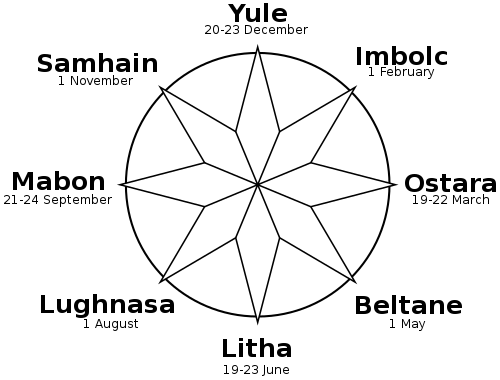 Druids had a Jewish connection the floors of the Holy Sepulcher may reflect the solar wheel Rennes Chateau is illuminated by the stained glass showing the Sun King and the Magdalene Halo shines on the floor  At the Holy Sepulcher there are two circular star patterns on the marble floors one for Christ ....a sun with wavy lines the Magdalene star is the straight lines similar to a compass 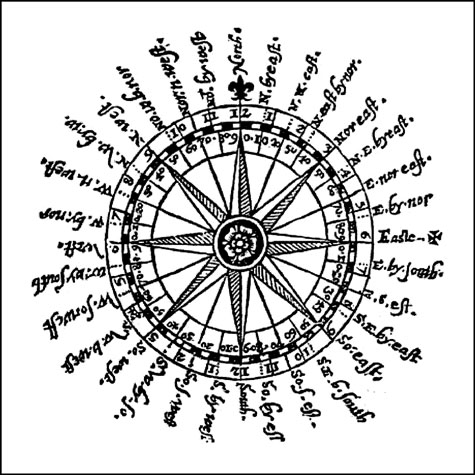 The Crusaders building the Holy Sepulchre had a understanding of the stars and the ending of the Pisces Age and the coming of the Water Bearer....Magdalene with her tears and her vase may reflect the Age of WOMEN |
|
|
|
Reply |
Message 21 of 42 on the subject |
|
Double Headed Eagle
Since ancient times, the eagle has always represented the planet Jupiter and it still does to this very day. These Ancient 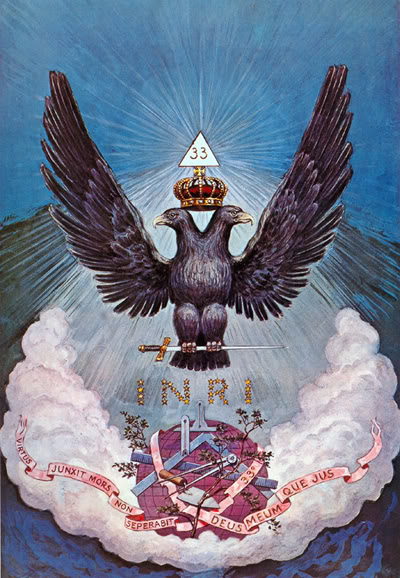 Symbols, such as the eagle has last the test of time because they are products of creation from the very same Brotherhood that has helped guide humanity through the darkness, by operating their light in the shadows over the last 3,000-5,000 years. Symbols, that have been placed everywhere around the world for those with any eye to see and the intuition to know. Symbols, such as the eagle has last the test of time because they are products of creation from the very same Brotherhood that has helped guide humanity through the darkness, by operating their light in the shadows over the last 3,000-5,000 years. Symbols, that have been placed everywhere around the world for those with any eye to see and the intuition to know.
These are the immortal beings of time, whose souls originate from the King of Planets. Many very famous men in history and also the bible have claimed Jupiter as their father. People like the Sons of Noah, such as Japheth who in the seventh century, Isidore of Seville traced the origins of most of the nations of Europe back to Japheth. The Greek conqueror Alexander the Great and also the Roman Dictators, Julius and Augustus Caesar had claimed Jupiter as their father.
Author, Manly P. Hall who was also a 33° Freemason had written about these immortal beings in, The Lost Keys of Freemasonry; “These were the immortals to whom the term phoenix was applied, and their symbol was the mysterious two-headed bird, now called an eagle, a familiar and little understood Masonic emblem”.
The name Japheth /ˈdʒeɪfɛθ/ (Hebrew: יָפֶֿתֿ, יֶפֶֿתֿ Yapheth , Modern Hebrew: Yefet ; Greek: Ἰάφεθ Iapheth ; Latin: Iafeth or Iapetus ; Arabic: يافث) is derived from Ja—God, or life, and Phatha, which means in Hebrew enlarged, and in other languages, father; thus, Japheth meant enlarged of God—God and father, or Deus pater. Various spellings of Japheth are Japheta, Japeta, Japhe, or Jophe, or, as the Latins “Iu-Pater” (yēu-pəter or Iuppiter, Iūpiter – Pater/Father or the nominative: *Dyēus-pətēr, meaning “O Father Sky-God”, or “O Father Day-God”); He was the ruler of the lower world whom the Latins had called “Father Jove”, and this is where we get the modern English spelling of Jupiter, who in Christianity is Saint Peter.
The most ancient symbol of the double headed eagle has been in use and documented in stone for approximately 3,000-5,000 years. Today, it is used as an emblem of authority by the very same Brotherhood that descend from the first people for whom it had originated thousands of years earlier. It is most commonly associated with the Byzantine Empire, the Holy Roman Empire, the Russian Empire and their successor states. A Brotherhood that now spans the globe with its out stretched wings, touching one another from the East to the West.
The first evidence of the use of the double-headed eagle, I have found to originate with the Ancient Hittites who may also be connected with the Sumerians. The Hittites built a Lion Gate at Hattusas and a Sphinx Gate nearby at Alaca Höyiik in the late Mycenaean period (fourteenth century B.C.E.), with a Double Eagle carved on one side.
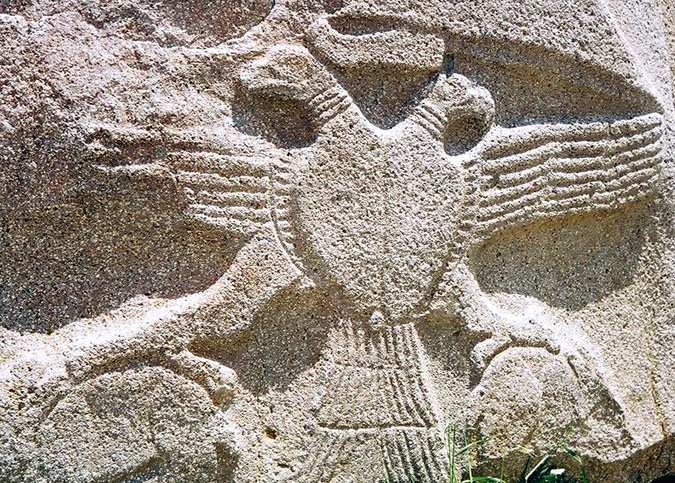
Evidence of these eagles were found on cylinders taken from the ruins of the ancient city of Lagash. The Hittites had worshiped the double headed eagle as the King of Heaven, who was also called the Hittite Bird of the Sun that was their symbol to signify Hittite military power. Today we know of the land of the Ancient Hittites as modern day Turkey, where you will find that the modern Turkish police have adopted the double-headed eagle in its insignia as a secondary charge.
The image and text below is from, “As it was in the beginning”, by T.R.Davies Coat of Arms No.109, Spring 1979 courtesy of The Heraldry Society;
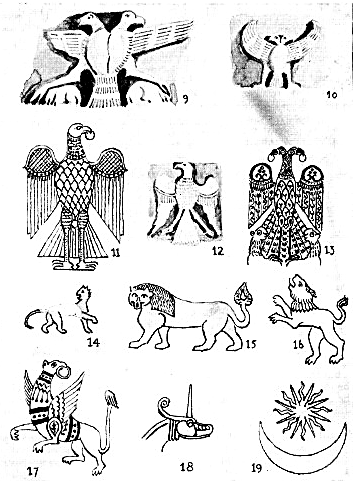 Fig. 9. Double eagle, Hittite 14th. C. B.C. — gateway, Alaya Hüyüt. Fig. 9. Double eagle, Hittite 14th. C. B.C. — gateway, Alaya Hüyüt.
Fig. 10. Double eagle, Hittite 13th. C. B.C. — rock gallery Yazilikaya.
Fig. 11. Byzantine textile, 11th. C. A.D. — St. Germ. Auxerre.
Fig. 12. Eagle displayed, Byz. 10th. C. A.D. — stone, B. Mus.
Fig. 13. Double eagle, Byz. 9th. C. A.D. based on the Alaya relief above, even to the crouching beasts beneath the talons
Fig. 14. Lion of curious gait, 6th. C. A.D. — mosaic, Istanbul.
Fig. 15. Lion of curious gait, 11th. C. A.D. — Byz. text, copied from Persian relief, Düsseldorf Mus.
Fig. 16. Lion rampant, Byz. text. 8th. C. A . D . — Lyons Mus.
Fig. 17. Griffin segreant, Byz. text. 7th. C. A.D. St. Urs. Köln, note that the Byz. griffin is among the first mythical beasts as a heraldic charge, long pre-dating the West European dragon.
Fig. 18. Head of a unicorn, Babyl. 6th. C. B.C., copied in Byz. art.
Fig. 19. The sun of Apollo and the moon of Artemis were the symbols of the protecting deities of pagan Byzantium and were retained by Christian Constantinople.
In the modern world we live in now, the emblem of the double headed eagle signifies the dominance of the Byzantine Emperors over both East and West. The double-headed eagle emblem of the Byzantine Empire shows in one claw a cross and the other an orb—a symbol of spiritual and secular authority. Their origins lie in the ancient Christian Church, and they maintain many traditions practiced in the Ancient Church. Several Eastern European nations adopted it from the Byzantines and continue to use it as their national symbol to this day.
The double headed eagle below is the Seal of the Ecumenical Patriarchate of Constantinople.
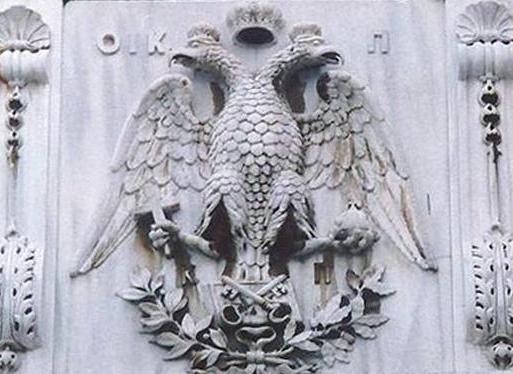
The Flag of the Greek Orthodox Church.

The Church of the Holy Sepulchre is one of the most Holy sites in all of the Christian world. Roman emperor Constantine had established the Church in the year 333 A.D., after his mother, Queen Helena, marked the place of Golgotha during her visit in 326AD.
The number 33 is often connected with the double headed eagle and a mosaic figure of a double headed eagle can be witnessed on the floor, in front of the chapel of the Holy Sepulchre.
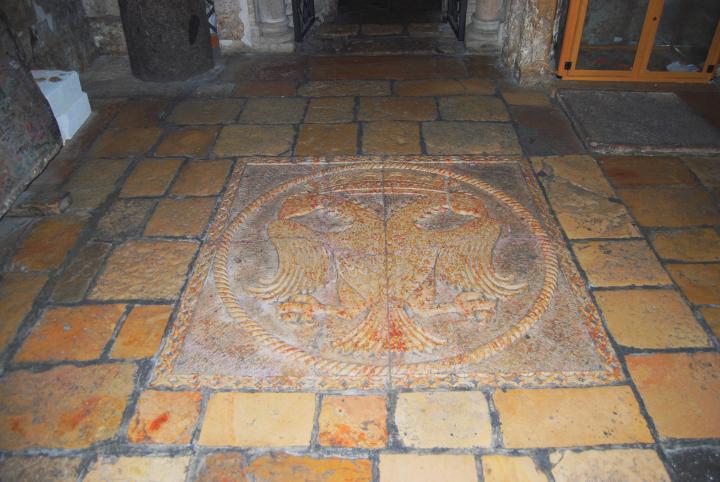
THE NUMBER 33 AND THE DOUBLE HEADED EAGLE
Jesus was crucified at Golgotha (place of the skull) at age 33 in the year 33 A.D. 33 represents Christ consciousness. Mount Hermon is at 33 degrees latitude and longitude. (In the Book of Enoch, Mount Hermon is the place where the Grigori; “Watchers, Sons of God or the Nephilim,” a class of fallen angels descended to Earth.) The divine name Elohim appears 33 times in the story of creation in the opening chapters of Genesis. The first Temple of Solomon stood for 33 years before being pillaged by King Shishak of Egypt. King David ruled over Israel for 33 years in Jerusalem. Alexander the Great (Alexander of Macedonia), a son of Jupiter had died at 33 years of age. Harry S. Truman, a 33 degree Mason, became 33rd President of the United States. In 1933, Adolf Hitler became Chancellor of Germany. The Grand Orient de France of Freemasonry founded in 1733.
The same number 33 is also the highest “honorary degree” of the ancient Brotherhood and Fraternity, that is known today as the Scottish Rite. When Scottish Rite Freemasonry had originated in the year 1758 in Paris, it was called “The Council of Emperors of the East and West.” The 33rd degree Council of Scottish Rite Freemasonry’s main symbol is also the same double headed eagle. The Latin words “Ordo Ab Chao” is seen displayed underneath this double headed phoenix. The English translation is “Order Out of Chaos or Order From Chaos.” It has been introduced in France in the early 1760s as the emblem of the Kadosh degree or Knight of the White and Black Eagle.

Council of Kadosh
The lesson of this degree is to be true to ourselves, to stand for what is right and just in our lives today. To believe in God, country and ourselves. There is no apron, but the jewel is a gold Teutonic cross, enameled in red, with the letters J.’.B.’.M.’. on the obverse, and a skull transpierced by a poinard on the reverse.
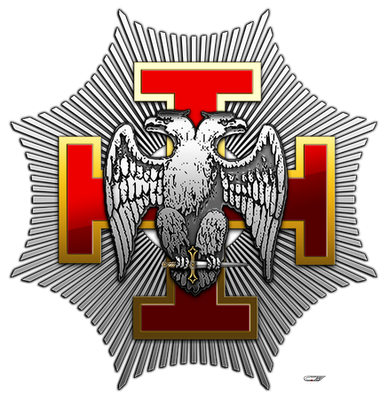
From the Masonic Dictionary;
The French records speak of seven: Kadosh of the Hebrews; Kadosh of the first Christians; Kadosh of the Crusades; Kadosh of the Templars; Kadosh of Cromwell or the Puritans; Kadosh of the Jesuits; and the True Kadosh. But the correctness of this enumeration is doubtful, for it cannot be sustained by documentary evidence. In all of these Kadoshes the doctrine and the modes of recognition are substantially the same, though in most of them the ceremonies of initiation differ.
Ragon mentions a Kadosh which is said to have been established at Jerusalem in 1118; but here he undoubtedly refers to the Order of Knights Templar.
Manly P. Hall, 33rd Degree Mason, had written in “The Lost Keys of Freemasonry”;
“The double-headed eagle was probably first accepted as a symbol of Freemasonry in 1758. In that year the body calling itself the Council of Emperors of the East and West, was established in Paris. The double-headed eagle was in all probability adopted by this body, which claimed a double jurisdiction. The eagle, one head inclined to the East and the other to the West, to guard any and all who might approach from either direction. The accepted symbol of our Rite is the Double-Headed Eagle of Lagash. It is the oldest crest in the world, according to fraternal scholars and was a symbol of power more than two thousand years before the building of King Solomon’s Temple.
“Among the ancients a fabulous bird called the Phoenix is described by early writers … in size and shape it resembles the eagle, but with certain differences. The body of the Phoenix is one covered with glossy purple feathers, and the plumes in its tail are alternately blue and red. The head of the bird is light in color, and about its neck is a circlet of golden plumage. At the back of its back the Phoenix has a crest of feathers of brilliant color …
The Phoenix, it is said, lives for 500 years, and at its death its body opens and the new born Phoenix emerges. Because of this symbolism, the Phoenix is generally regarded as representing immortality and resurrection … The Phoenix is one sign of the secret orders of the ancient world and of the initiate of those orders, for it was common to refer to one who had been accepted into the temples as a man twice-born, or reborn. Wisdom confers a new life, and those who become wise are born again.” [p. p. 176-77]
The Dukes of Bavaria are also descendants of the Byzantine emperors. Hence, it is quite possible that the Bavarian Illuminati may also be connected with the double headed eagle.
In the Holy Roman Empire’s heraldry, it represents the union of church and the state. The double headed Eagle signifies a double imperial power, and was for the use of emperors who claim to be the successor of the Caesars of Rome ; Thus the Eagle of the Eastern Empire united with that of the West, typifying the Holy Roman Empire, and is where we see the use of this double head.
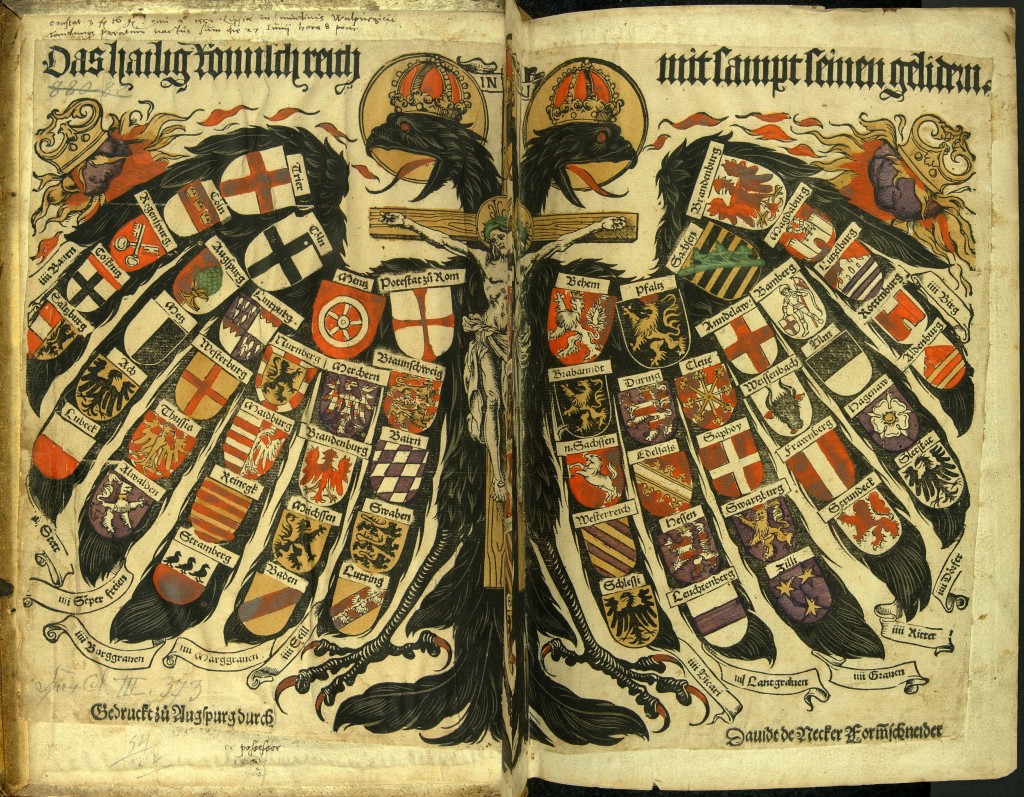
Charlemagne first made use of the double-headed eagle when he became head of the German Empire, the two heads denoting the union of Rome and Germany, in AD 802.
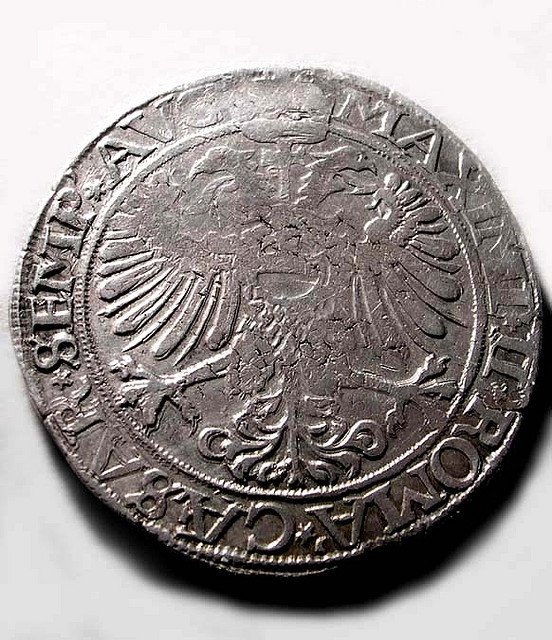
After the East West Schism, there was a division of the Roman Empire into the East and the West. The emperors of the West used a black Eagle, and those of the East a golden one; since which period Austria, Prussia, Russia, France, and also Poland, when a nation, have also used the Eagle as their royal emblem.
The two-headed mythological bird of Hindu mythology is thought to possess magical strength. It is used as the official emblem by the Karnataka government and it is seen as an intricately sculptured motif in Hindu temples
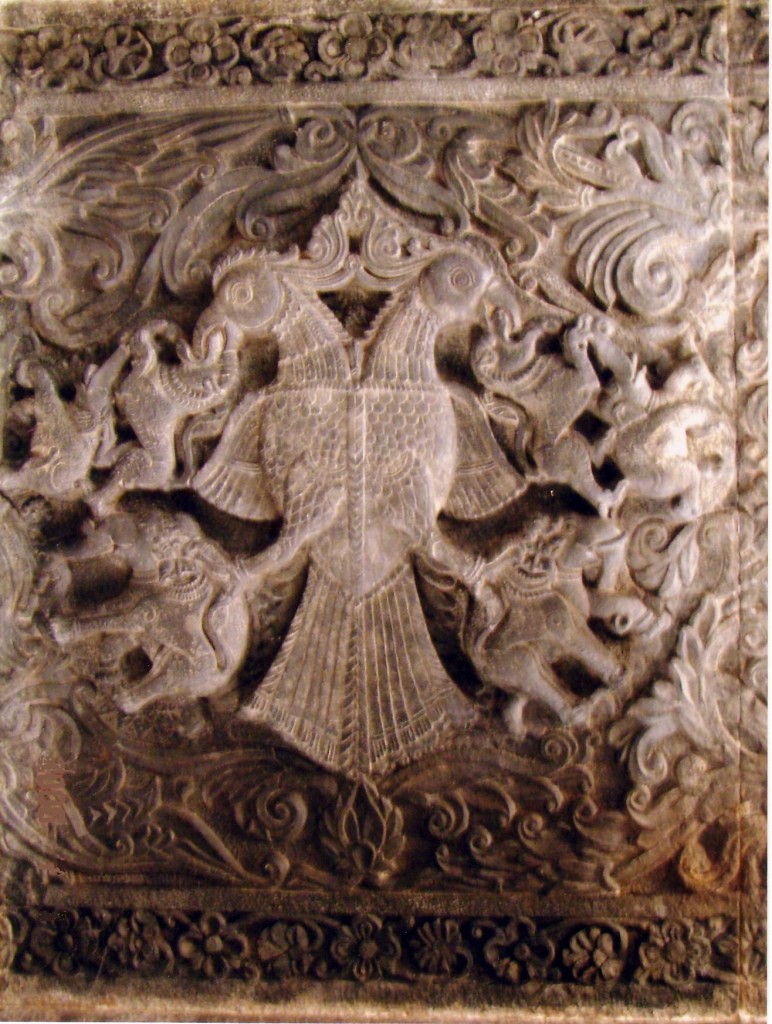
Below is a list of countries and entities that currently use the double headed eagle as their emblem;
Coat of arms of the Russian Empire
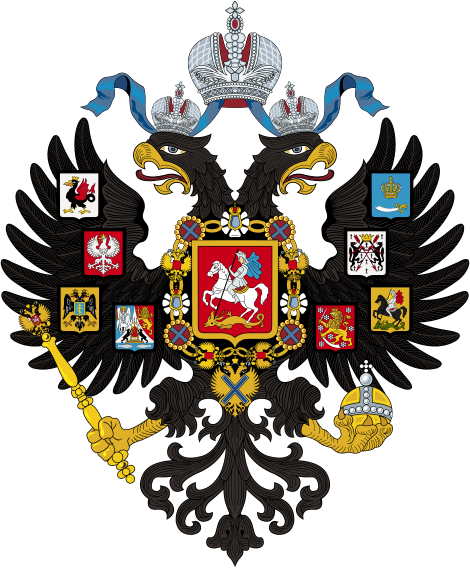
Imperial Coat of arms of the Austrian Empire
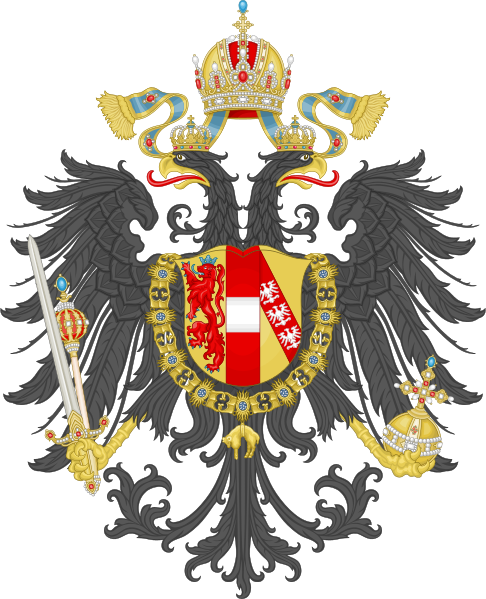
Current Flag of Albania
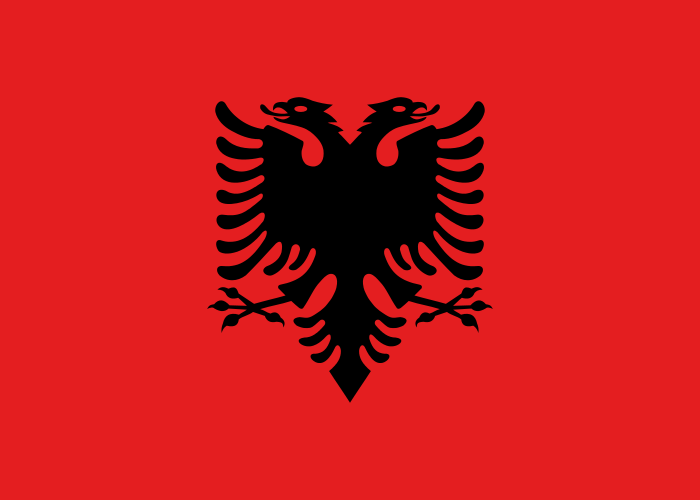
On March 27, 2006, Armenia signed a Millennium Challenge Compact with the United States; the agreement entered into force on September 29, 2006. Provided the Armenian Government makes progress on mutually agreed-upon policy performance criteria (corruption, ruling justly, and investing in people), the agreement will provide $235 million to Armenia over five years to reduce rural poverty through the improvement of rural roads and irrigation networks. In 2012 or 2013, US and Armenia are planning to hold their first ever joint military drills, during which Armenian soldiers will be trained for their current multi-national peacekeeping operations.(Wikipedia)
OTHER COUNTRIES:
Armenia – The double-headed eagle was also in use by the Arsacid Dynasty of Armenia in the 3rd to 9th centuries.
Austria (1934–1938)
Austria-Hungary
Byzantine Empire
German Confederation
In modern Greece it is used officially by the Hellenic Army (Coat of Arms of Hellenic Army General Staff)
Holy Roman Empire
Kingdom of Mercia (527–918)
Montenegro, Kingdom of Mysore
Russian Federation
Seljuk Empire
Serbia
Serbian Empire
Kingdom of Serbia
Spanish Empire (during the Habsburg dynasty)
Kingdom of Yugoslavia
|
|
|
|
Reply |
Message 22 of 42 on the subject |
|
ELENA DE CONSTATINOPLA, LA MADRE DE CONSTANTINO MURIO EN EL AÑO 330-FUERTE RELACION CON LA IGLESIA DEL SANTO SEPULCRO/MARIA MAGDALENA
Helena de Constantinopla
De Wikipedia, la enciclopedia libre
Flavia Iulia Helena, también conocida como santa Elena, santa Helena y Helena de Constantinopla, (Drépano, hacia 250 - Roma, 329), fue una emperatriz romana y santa de las iglesias Católica y Ortodoxa.
Probablemente nació en Drépano[1] (actual Trapani), en Bitinia,[2] al noroccidente de Anatolia, Turquía y que fue renombrada Helenópolis por su hijo Constantino I. Aunque supuestamente era hija de un sirviente, ello no impidió que fuese la primera esposa del tetrarca Constancio Cloro.
Constancio Cloro la tomó como concubina, luego como esposa y más tarde se divorció de ella en 292 para casarse con la hijastra de Maximiano, Flavia Maximiana Teodora. El hijo de Helena, Constantino, se convirtió en emperador del Imperio romano y, después de su coronación, ella tuvo una destacada presencia en la corte imperial. Ya reinando Constantino se convirtió al cristianismo, influyendo sobre su hijo a favor del cristianismo.
Es considerada por los ortodoxos y católicos como santa, famosa por su piedad. Eusebio tomó detalles de su peregrinaje a Tierra Santa y otras provincias del Medio Oriente. Es tradicionalmente conocida (pero no por Eusebio) por buscar las reliquias de la cruz de Cristo (Verdadera Cruz), y buscar los restos de los Reyes Magos, que actualmente se conservan en la Catedral de Colonia. En su búsqueda de la cruz donde Jesucristo murió, demolió el templo erigido a Venus en el monte Calvario e hizo cavar, hasta que le dieron noticias, en los primeros días de mayo, de haber encontrado la Cruz. Elena mandó construir un templo allí y otro en el monte de los Olivos.
Su día festivo se celebra en la Iglesia Cristiana Ortodoxa con el de su hijo Constantino, el 21 de mayo. La Iglesia Católica Romana la conmemora el 18 de agosto. En el santoral católico, esta santa es considerada patrona de la arqueología, de la conversión y de los matrimonios difíciles.[3]
Su iconografía habitual la muestra como emperatriz romana, vestida con ricos ropajes, y portando casi siempre la Vera Cruz, y a veces con su hijo Constantino. Es muy habitual la representación del momento del hallazgo de las reliquias (Exaltación de la Cruz) en el monte Calvario y los prodigios y milagros subsiguientes. Artistas como Piero della Francesca o Pedro Berruguete ilustraron estos episodios.
En Inglaterra, en una leyenda posterior, mencionada por Geoffrey de Monmouth, se dice que fue hija del rey bretón Coel, que se alió con Constancio para evitar la guerra entre los bretones y Roma.
- En una aldea de Fuente Obejuna (provincia de Córdoba), (Los Morenos), tienen a santa Elena como patrona. El 18 de agosto, al procesionar la imagen, se conserva la tradición de cubrir las andas con albahaca. Según la leyenda, esta planta olorosa abundaba en el campo donde se encontró la Cruz que la santa emperatriz buscaba.
- En la provincia de Jaén, se encuentra el municipio de Santa Elena, en el cual, tras nueve días de novena para venerar a la patrona del pueblo, se culminan los cultos procesionando su imagen el día 18 de agosto por las calles del pueblo.
- En el pueblo de Aznalcóllar (provincia de Sevilla) se venera una imagen de santa Elena, titular de la Hermandad de la Cruz de Abajo, que procesiona en agosto cada cuatro años.
- En Villalba del Alcor (Huelva) veneran desde hace años la imagen de Santa Elena emperatriz, que comparte capilla con la Cruz de la calle Cerrillo.
- Magaz de Abajo celebra las fiestas en honor a su patrona, Santa Elena, el último fin de semana de Abril.
http://es.wikipedia.org/wiki/Helena_de_Constantinopla
|
|
|
|
Reply |
Message 23 of 42 on the subject |
|
Santo Sepulcro
De Wikipedia, la enciclopedia libre
|
|
Este artículo o sección necesita referencias que aparezcan en una publicación acreditada, como revistas especializadas, monografías, prensa diaria o páginas de Internet fidedignas.
Puedes añadirlas así o avisar al autor principal del artículo en su página de discusión pegando: {{subst:Aviso referencias|Santo Sepulcro}} ~~~~ |

Iglesia del Santo Sepulcro.

Planta del edificio durante el siglo IV.
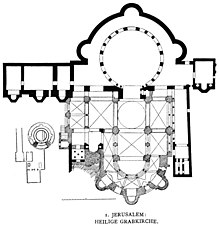
Planta del edificio durante el siglo XIX.

Bóveda del Catolicon con la imagen de Jesús.
El Santo Sepulcro es un santuario religioso del Cristianismo, situado en la ciudad de Jerusalén.
Se encuentra bajo la custodia de diversas confesiones cristianas, entre ellas, armenios ortodoxos, católicos ortodoxos y católicos romanos.[1]
El lugar, llamado también Gólgota (en arameo, Golgotha, "calavera") es el punto exacto donde -según los Evangelios- se produjo la Crucifixión, enterramiento y Resurrección de Cristo. Está ubicado dentro de la Ciudad Vieja de Jerusalén, la cual a su vez se ubica en la línea de confluencia entre la Jerusalén oriental (árabe) y occidental (judía).
Al templo del Santo Sepulcro también se le conoce como Basílica de la Resurrección (Griego: Ναός της Αναστάσεως, Naós tis Anastáseos; Georgiano: Agdgomis Tadzari; Armenio: Surp Harutyun) o de la Anástasis (en griego, "Resurrección"). Es uno de los centros más sagrados del Cristianismo, y ha sido un importante centro de peregrinación desde el siglo IV. Hoy día alberga la sede del Patriarca Ortodoxo de Jerusalén y es la catedral del Patriarcado Latino de Jerusalén.
En general, cuando se habla del Santo Sepulcro, se pueden distinguir dos cosas:
- La iglesia en la que se encuentran el sepulcro de Jesús, el monte Calvario (donde murió), la piedra donde fue ungido antes de ser sepultado y el aljibe donde fue encontrada su cruz cuatro siglos más tarde. Secundariamente alberga diversas capillas. Entre ellas destaca la capilla de Santa Elena, el coro de los Griegos y la capilla del Santísimo (de los franciscanos, custodios de Tierra Santa), la capilla de Longinos, y otras más.
- El sepulcro de Jesús (que se encuentra dentro de aquella iglesia).
El lugar hace referencia a la sepultura de Jesús en una época comprendida entre el año 30 y 33.[cita requerida] Entre los sitios religiosos de Tierra Santa, el Santo Sepulcro es uno de los mejor datados[cita requerida] históricamente.

En este lugar encarcelaron a Jesús.
El significado religioso dado al Santo Sepulcro dentro del Cristianismo es importantísimo, pues dentro de este recinto se encuentra tanto el Calvario, donde Jesucristo murió, como su sepulcro, lugar en el que, según afirman los Evangelios, resucitó al tercer día de su muerte. Por esta razón el sepulcro es el centro principal de la basílica. La capilla que lo contiene, en medio de la llamada «Rotonda» al frente del coro de los Griegos, es conocida como la ἀνάστασις (que en griego significa 'resurrección').
Según los evangelios, antes de la muerte de Jesús el sitio era una tumba ya habilitada como tal, pero no utilizada todavía, propiedad de un rico judío seguidor de Cristo llamado José de Arimatea. Se trataría de un hueco horadado en la roca, que podía taparse con una gran piedra destinada al efecto para que rodara o se deslizara hasta la abertura del nicho.
Una de las versiones sobre el primer anuncio de la Resurrección de Cristo, según los Evangelios, es el momento en que las mujeres que iban a ungir su cadáver con especias aromáticas —María Magdalena, María de Cleofás, madre de Santiago el Menor y Judas Tadeo, y Salomé (discípula), madre de Santiago y Juan— se encontraron con la piedra desplazada, y el nicho expuesto y vacío.
Siempre teniendo como única fuente los Evangelios, pero confirmados por los trabajos arqueológicos[cita requerida], la tumba estaría situada en un jardín próximo a la roca —o montaña, o montículo; los evangelios dicen lugar— donde se produjo la Crucifixión, llamado originalmente Gólgota y luego Calvario (lat. calvaria, calavera), o en griego kranion (cráneo). Ese lugar estaba muy próximo a la muralla herodiana de la ciudad de Jerusalén, e incluso comunicado con ella por una calle, pero extramuros, ya que las normas judías prohibían los enterramientos intramuros, salvo para el caso de los reyes.
La destrucción de Jerusalén efectuada por los romanos trajo la ruina para el Templo de Jerusalén y para otros lugares tradicionales de la antigua ciudad puesta entonces bajo el mando de los paganos. Si bien los primeros cristianos huyeron hacia Petra antes de la destrucción siguiendo una interpretación profética de Jesús (Lucas 21, 20-22), los mismos dejaron por escrito en los Evangelios la descripción del lugar de la Crucifixión y de la sepultura: Mateo 27, 33; 57 - 61; Marcos 15, 22; 42 - 47; Lucas 23, 33; 50 - 55; Juan 19, 17; 38 - 42. Ambos sitios, el Gólgota y la Tumba, están a pocos metros de distancia y entre ellos se encuentra la Piedra de la Deposición, lugar en donde dice la tradición el cuerpo de Jesús fue preparado después de ser bajado de la cruz para ser enterrado - Mateo 27, 59 y paralelos -. El lugar fue evidentemente una cantera por la enorme riqueza lítica y la red de cavernas que se pueden observar[cita requerida], un sitio ideal para la construcción de tumbas, una actividad muy normal en la época, especialmente entre personas de cierta posición social. El nombre, «Gólgota», la «Calavera», viene probablemente de la semejanza que las formas que las rocas tenían, como se puede comprobar hoy por hoy en los paisajes desérticos del Mar Muerto. Los romanos cambiaron el nombre de Jerusalén por el de Aelia Capitolina con el fin de hacer de la ciudad un enclave exclusivamente greco-romano - prohibieron el ingreso de los pueblos semitas - y construyeron lugares de culto pagano en donde estaba el Templo de Jerusalén y el Santo Sepulcro. Dicho acontecimiento es una de las pruebas históricas y arqueológicas que evidencian la historicidad de ambos sitios. En cuanto al Santo Sepulcro, en el año 326, el Emperador Constantino mandó erigir la Basílica del Santo Sepulcro en el lugar prescrito por la tradición y en el cual estaba erigido el culto pagano a la diosa romana Venus, mandado construir por Adriano, hacia el 135.
La Emperatriz Elena había acudido a la ciudad tras escuchar el informe presentado por Macario, obispo de Jerusalén, sobre el lamentable estado en el que se encontraban los lugares descritos en los evangelios (santos lugares, para los cristianos), decidida a mejorar personalmente la situación. Tenía también el propósito de localizar la cruz de la ejecución de Jesús; Constantino había empezado a utilizar el signo de la cruz, y a considerarlo presagio de victoria.
Elena, tras fracasar en la búsqueda de la cruz, o como parte de ella, inició la del sepulcro. La tradición cuenta que al derruir el templo pagano para aislar el Calvario e iniciar las nuevas edificaciones aparecieron también tres cruces, una de las cuales necesariamente habría[cita requerida] de ser la Vera Cruz o auténtica cruz del martirio de Cristo. Varias leyendas describen el prodigio que permitió identificar la Vera Cruz, casi siempre basadas en que una de las cruces producía curaciones milagrosas, y las otras dos no.
Los sucesos descritos a partir de 325-326, sobre el descubrimiento del sepulcro y la Vera Cruz por la Emperatriz Elena, se deben al obispo de Cesarea (Palestina) e historiador Eusebio, llamado también el Padre de la historia de la Iglesia.
http://es.wikipedia.org/wiki/Santo_Sepulcro
|
|
|
|
Reply |
Message 24 of 42 on the subject |
|
unsacerdoteentierrasanta.blogspot.com/.../historia-de-la-basilica-del-santo...
12/9/2009 - En la imagen aparece la capilla de Santa Elena, que fue construida en ... de la Santa Cruz, que fue devuelta a la Iglesia del Santo Sepulcro el ...
www.es.catholic.net/turismoreligioso/662/2042/articulo.php?id=19667
El emperador Constantino decidió construir la magnífica Iglesia del Santo Sepulcro ... ser vistos a lo largo de los lados norte y sur de la capilla de Santa Helena.
www.virtual-travel.es/.../iglesia-del-santo-sepulcro-capilla-de-santa-elena....
Iglesia del Santo Sepulcro - Capilla de Santa Elena je virtuální prohlídka v lokalitě Jerusalén.
ceutadesconocida.wordpress.com/el-santo-sepulcro/
... la perspicacia de Santa Elena, madre del emperador Constantino el Grande, que al toparse ... En su interior se localizan diversas capillas, dedicadas a los trágicos ... Junto a la rotonda que alberga el Santo Sepulcro, se halla una estancia ...
adigital.pntic.mec.es/lcra.de.felechares.de.la.valderia/.../Santa-Elena.htm
Elena fue la madre del emperador Constantino el Grande. ... en Jerusalén, que encierra una capilla dedicada a la santa, con pinturas de Pinturicchio. ... después de haber cavado profundamente, descubrió el Santo Sepulcro, junto al cual se ...
14/5/2013 - Entramos en la Basílica del Santo Sepulcro, en el corazón de este templo se encuentra el ... La capilla contigua está dedicada a Santa Elena.
www.preguntasantoral.es/2013/03/santo-sepulcro-de-jerusalen/
31/3/2013 - Esta basílica del Santo Sepulcro está situada en la ciudad santa de Jerusalén, ... Vista de la Capilla del Gólgota, sobre el monte Calvario mismo. ... preciso donde estaban el Gólgota y la Tumba y en el año 326 Santa Elena, ...
|
|
|
|
Reply |
Message 25 of 42 on the subject |
|
Jerusalem

Church of St Mary Magdalene (left) and Church of Dominus Flevit on Mount of Olives (Seetheholyland.net)
The Mount of Olives, a long ridge to the east of Jerusalem, is the location of many biblical events. At 820 metres, it is Jerusalem’s highest peak and offers an unrivalled vista of the Old City and its environs.
The ridge, also called Mount Olivet, takes its name from the fact that it was once covered with olive trees.
In the Old Testament, King David fled over the Mount of Olives to escape when his son Absalom rebelled (2 Samuel 15:30).
After King Solomon turned away from God, he built pagan temples there for the gods of his foreign wives (1 Kings 11:7-8).
Ezekiel had a vision of “the glory of the Lord” ascending from the city and stopping on the Mount of Olives (Ezekiel 11:23).
Zechariah prophesied that in the final victory of the forces of good over the forces of evil, the Lord of hosts would “stand on the Mount of Olives” and the mount would be “split in two from east to west” (Zechariah 14:3-4).
Jesus knew it well
In the New Testament, Jesus often travelled over the Mount of Olives on the 40-minute walk from the Temple to Bethany. He also went there to pray or to rest.
He went down the mount on his triumphal entry to Jerusalem on Palm Sunday, on the way weeping over the city’s future destruction (Luke 19:29-44).
In a major address to his disciples on the mount, he foretold his Second Coming (Matthew 24:27-31).
He prayed there with his disciples the night before he was arrested (Matthew 26:30-56). And he ascended into heaven from there (Acts 1:1-12).
A place for pilgrims to sleep

Jewish cemetery on Mount of Olives (Seetheholyland.net)
Until the destruction of the Temple, the Mount of Olives was a place where many Jews would sleep out, under the olive trees, during times of pilgrimage.
During the Siege of Jerusalem which led to the destruction of the city in AD 70, Roman soldiers from the 10th Legion camped on the mount.
In Jewish tradition, the Messiah will descend the Mount of Olives on Judgement Day and enter Jerusalem through the Golden Gate (the blocked-up double gate in the centre of the eastern wall of the Temple Mount, also known as the Gate of Mercy, or the Beautiful Gate).
For this reason, Jews have always sought to be buried on the slopes of the mount. The area serves as one of Jerusalem’s main cemeteries, with an estimated 150,000 graves.
Among them is a complex of catacombs called the Tombs of the Prophets. It is said to contain the graves of the prophets Haggai, Zechariah and Malachi, who lived in the 6th and 5th centuries BC, but the style of tombs belongs to a later time.
From Byzantine times the mount became a place of church-building. By the 6th century it had 24 churches, surrounded by monasteries containing large numbers of monks and nuns.
Several major pilgrimage sites

Church of All Nations on Mount of Olives (© Tom Callinan / Seetheholyland.net)
The Mount of Olives is the location of several major sites for pilgrims. They include:
• Church of All Nations (Basilica of the Agony): A sombre church at Gethsemane, built over the rock on which Jesus is believed to have prayed in agony the night before he was crucified.
• Church of St Mary Magdalene: A Russian Orthodox church whose seven gilded onion domes, each topped by a tall cross, make it one of Jerusalem’s most picturesque sights.
• Church of Dominus Flevit: A church in the shape of a teardrop, commemorating the Gospel incident in which Jesus wept over the future fate of Jerusalem.
• Church of Pater Noster: Recalling Christ’s teaching of the Lord’s Prayer, this church features translations of the prayer in 140 languages, inscribed on colourful ceramic plaques.
• Dome of the Ascension: A small shrine, now a mosque marking the place where Jesus is believed to have ascended to heaven.
• The garden and grotto of Gethsemane: The ancient olive grove identified as the place where Jesus went to pray the night before he was crucified, and the cave where his disciples are believed to have slept.
• Tomb of Mary: A dimly-lit, below-ground church where a Christian tradition says the Mother of Jesus was buried.
Related sites:
Church of all Nations
Church of St Mary Magdalene
Church of Dominus Flevit
Church of Pater Noster
Dome of the Ascension
Gethsemane
Tomb of Mary
http://www.seetheholyland.net/mount-of-olives/
|
|
|
|
Reply |
Message 26 of 42 on the subject |
|
His mastery of bronze is shown in his Urn for the Magdalene in St. Maximin in southern France and the relief Ecstasy of St. Mary Magdalene in the church of Santi Luca e Martina in Rome. AlgardiI couldn't find a picture of it Cortona's the three Bees of Barberini the three Bees of Barberini
_________________
Everything is Connected and there are no
coincidences
|
|
|
|
Reply |
Message 27 of 42 on the subject |
|
The Church of Mary Magdalene is a Russian Orthodox church located on the Mount of Olives, near the Garden of Gethsemane in Jerusalem, Israel.The church is dedicated to Mary Magdalene (Miryam of Migdal), a follower of Jesus. According to the sixteenth chapter of the gospel of Mark, Mary Magdalene was the first to see Christ after his resurrection. (Mark 16:9) She is considered a crucial and important disciple of Jesus, and seemingly his primary female associate, along with Mary of Bethany, whom some believe to have been the same woman.[1]The church was built in 1886 by Tsar Alexander III to honor his mother, Empress Maria Alexandrovna of Russia. It was constructed to David Grimm's design in the traditional tented roof style popular in 16th and 17th century Russia, and includes seven distinctive, gilded onion domes. The convent is located directly across the Kidron Valley from the Temple Mount.Two martyred saints, who are the Grand Duchess Elizabeth Feodorovna of Russia and her fellow nun Varvara Yakovleva are buried in the church.[2]In the 1930s, Princess Alice of Battenberg, mother of the Duke of Edinburgh, visited the church and asked to be buried near the Grand-Duchess Elizabeth. In 1969, she died at Buckingham Palace. In 1988, her remains were transferred to a crypt below the church.[3]http://en.wikipedia.org/wiki/Church_of_Maria_Magdalenethe pentacles are seen in the mosaic floorOne large white one and a tilted red one surrounded by a circleis seen in a chapel  to the far right there is four cube like tiles on the floorbehind the candlesThe painting is of Tiberius being taught a lesson by Mary MagdaleneIn her hand she holds a red egg which she presents to the Emperor, symbolizing the resurrection and eternal life. She tells Tiberius about the unjust judgment and death on the cross of Jesus Christ. It is known that after re-examining this unlawful trial Pilate, at that time governor of Jerusalem, was deposed and sent into exile.Mount Olives and GethesameneTomb of the Prophets: Beginning at the top of the Mount of Olives is the Tomb of the prophets. According to Jewish tradition this is the location of where the prophets Haggai, Zechariah, and Malachi are buried. However, the tombs are actually catacombs which came into use around 1st century B.C. what is interesting is the Dome of the Rocks has a gold roof and so does Mary Magdalene ChurchIn the chapel of Mary Magdalene at the Church of the Holy Sepulcrehttp://www.biblewalks.com/Photos9/Spulcher12.JPGthe floor patten is interesting especially the star like circle with a green circle in the middlethe floor pattern dates back to 1100 AD he Russian abbot Daniel visited Jerusalem in 1106-1107 and left this description: "The Church of the Resurrection is of a circular form having twelve monolithic columns and six pillars. Its floor is made of beautiful marble slabs.url]http://www.christusrex.org/www1/jhs/TSspdest.html[/url] to the far right there is four cube like tiles on the floorbehind the candlesThe painting is of Tiberius being taught a lesson by Mary MagdaleneIn her hand she holds a red egg which she presents to the Emperor, symbolizing the resurrection and eternal life. She tells Tiberius about the unjust judgment and death on the cross of Jesus Christ. It is known that after re-examining this unlawful trial Pilate, at that time governor of Jerusalem, was deposed and sent into exile.Mount Olives and GethesameneTomb of the Prophets: Beginning at the top of the Mount of Olives is the Tomb of the prophets. According to Jewish tradition this is the location of where the prophets Haggai, Zechariah, and Malachi are buried. However, the tombs are actually catacombs which came into use around 1st century B.C. what is interesting is the Dome of the Rocks has a gold roof and so does Mary Magdalene ChurchIn the chapel of Mary Magdalene at the Church of the Holy Sepulcrehttp://www.biblewalks.com/Photos9/Spulcher12.JPGthe floor patten is interesting especially the star like circle with a green circle in the middlethe floor pattern dates back to 1100 AD he Russian abbot Daniel visited Jerusalem in 1106-1107 and left this description: "The Church of the Resurrection is of a circular form having twelve monolithic columns and six pillars. Its floor is made of beautiful marble slabs.url]http://www.christusrex.org/www1/jhs/TSspdest.html[/url]
_________________
Everything is Connected and there are no
coincidences
|
|
|
 First First
 Previous
13 a 27 de 42
Next Previous
13 a 27 de 42
Next Last
Last
|










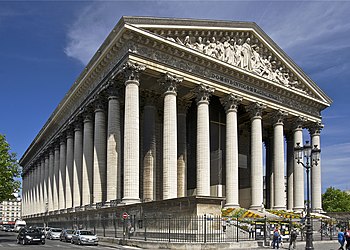







 August 7, 2013
August 7, 2013

























